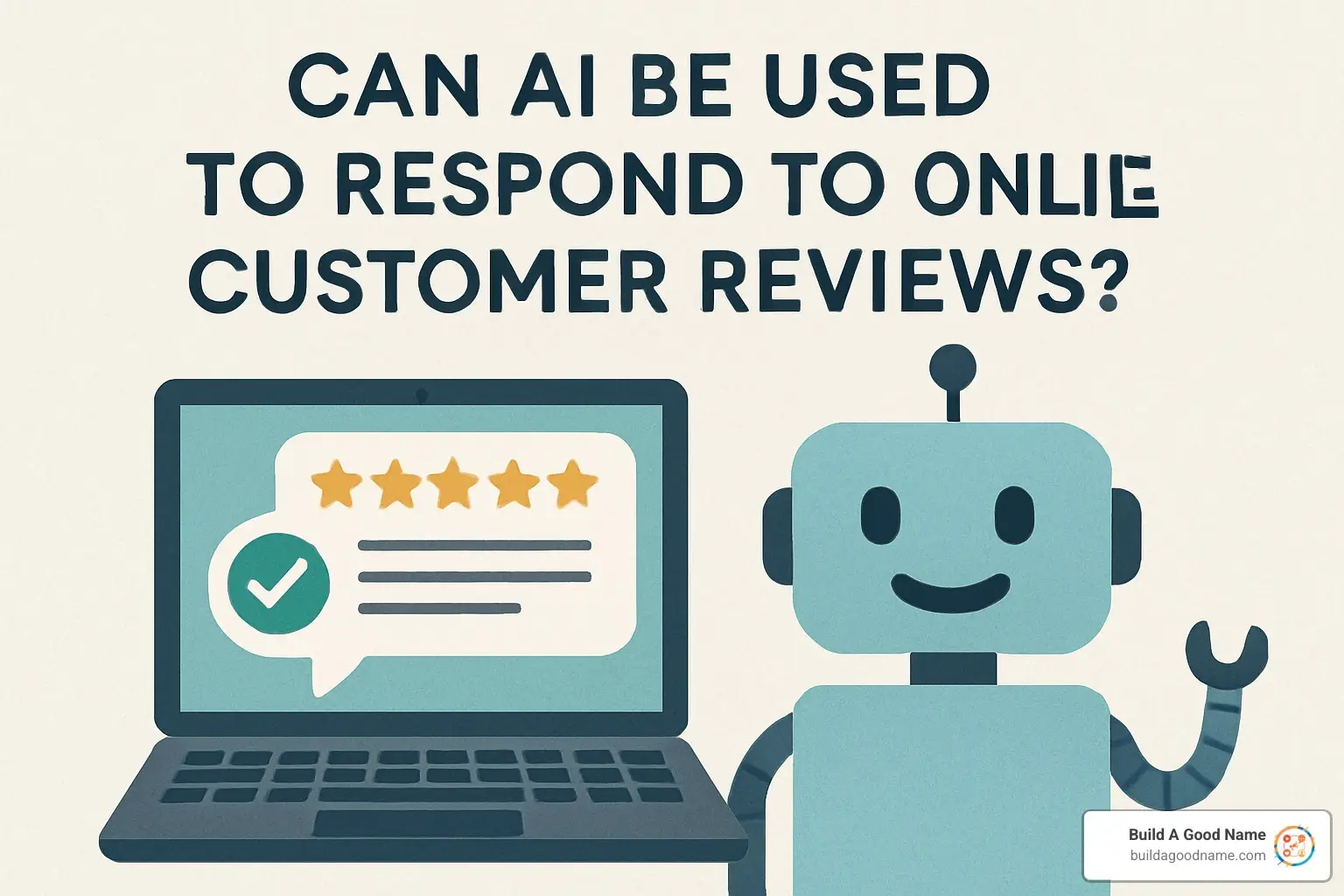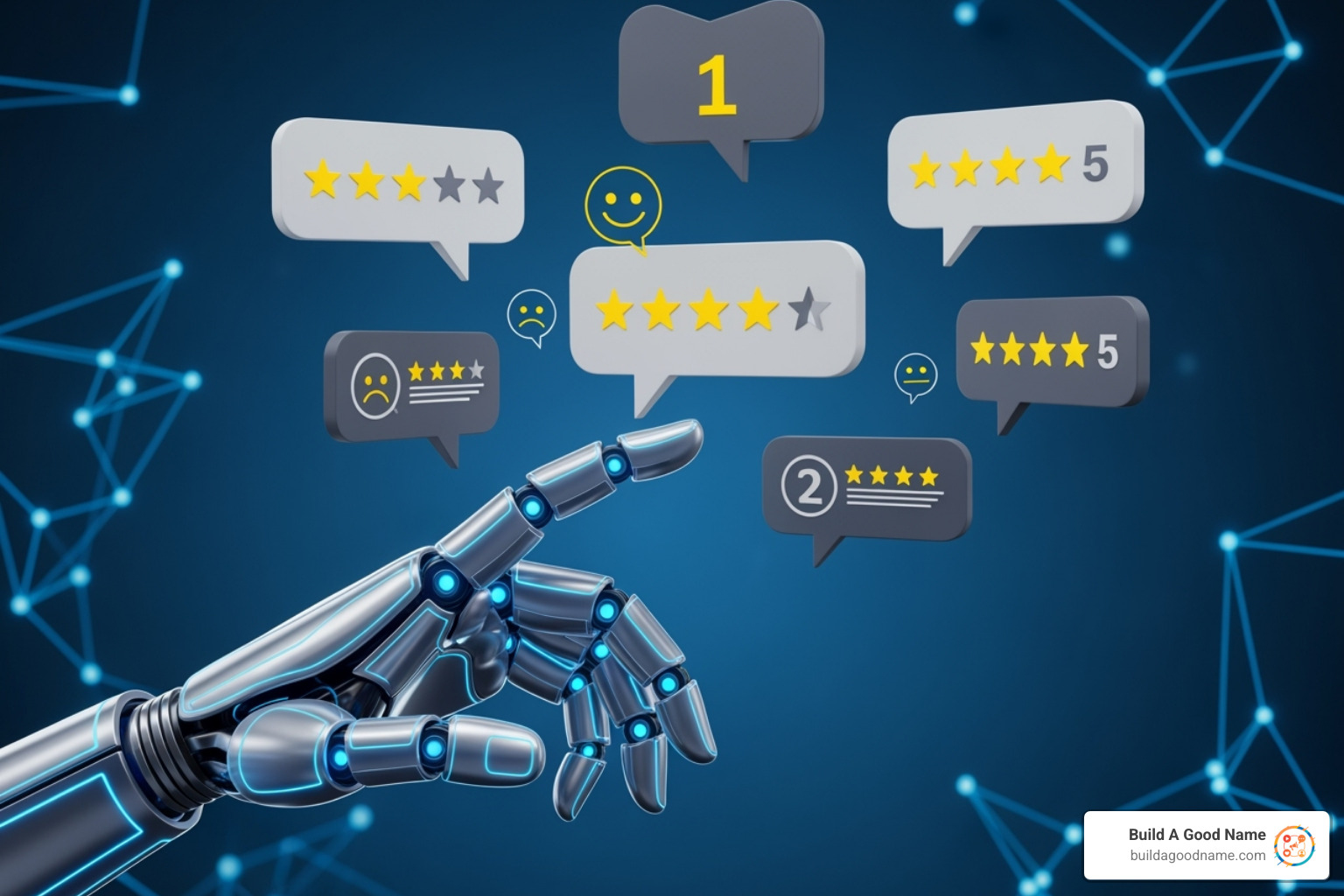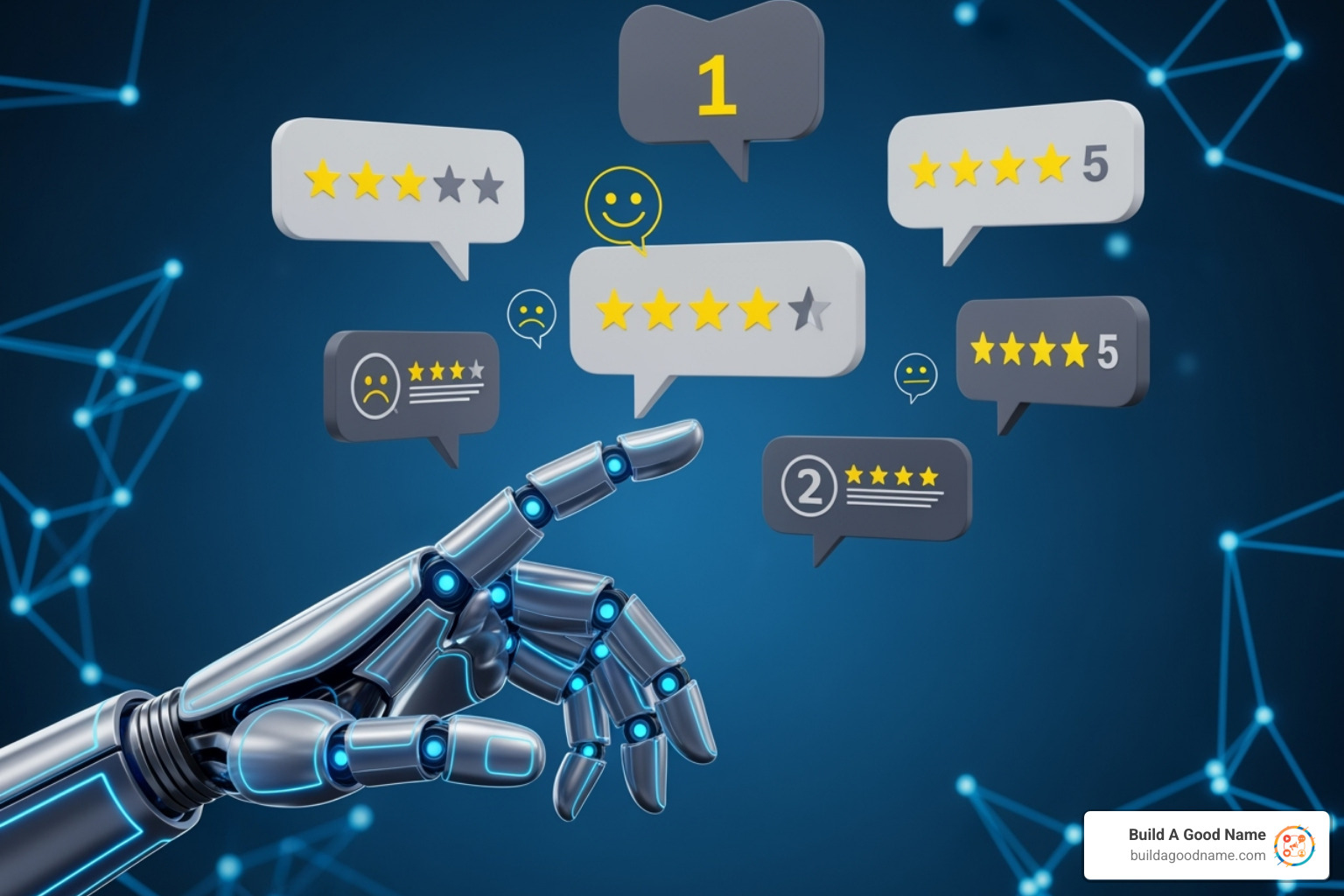Why AI Review Response is Revolutionizing Customer Engagement
Can AI be used to respond to online customer reviews? Yes, absolutely. AI can analyze customer feedback, understand sentiment, and generate personalized responses in seconds. Here’s what you need to know:
Quick Answer:
- Yes, AI can respond to reviews using natural language processing and sentiment analysis
- 58% of consumers prefer AI-generated responses over human replies in blind tests
- Works across all platforms – Google, Yelp, Facebook, and more
- Saves 10x the time while maintaining professional quality
- Best approach is hybrid – AI drafts with human oversight
After a long day running your business, the last thing you want to see is a pile of unanswered reviews waiting for your attention. One business owner put it perfectly: “After a long day on your feet—hair smelling like the breakfast buffet—how can you find the right words to reply to a negative review?”
The numbers tell the story. 88% of consumers will use a business that replies to all reviews, compared to just 47% who’ll choose one that doesn’t respond at all. But here’s the problem: manually crafting thoughtful responses takes hours you don’t have.
That’s where AI steps in. Recent surveys show that when customers can’t tell the difference, they actually prefer AI-generated responses 58% of the time. The technology has gotten so good that AI can now craft empathetic, personalized replies that feel genuinely human.
The best part? You’re not choosing between AI and human touch. Smart business owners are using hybrid workflows where AI handles the heavy lifting, and humans add the final polish.

Can AI Be Used to Respond to Online Customer Reviews? Absolutely—Here’s Why
Can AI be used to respond to online customer reviews? Yes, and for many local businesses it’s already the new normal.
Modern AI tools combine large language models (LLMs), sentiment analysis, and natural-language processing to read a review, detect its mood, and draft a reply in seconds. Instead of pasting a bland template, the system notices the difference between “The food was fine, I guess” and “Amazing fish tacos!” and adapts the tone.
Key wins you’ll see right away:
- 10× faster response rates with professional quality
- Blind tests show 58 % of consumers prefer AI replies to human ones (BrightLocal)
- Works on Google, Yelp, Facebook, and any site you connect
- Huge cost savings compared with hiring extra staff
- Multilingual replies without hiring translators
How it works behind the scenes
- The moment a review lands, the AI ingests the text and rating.
- Star-rating triggers decide the overall strategy (praise, clarify, or apologise).
- Sentiment analysis and tone modelling dig into the emotions beneath the words.
- Context windows pull in past interactions so the reply feels personalised.
- The draft is returned for human approval or automatic posting, depending on the rules you set.
Real-world results
Businesses using our automated replies typically move from answering 1 in 10 reviews to replying to almost every review within 24 hours. In double-blind tests, customers preferred the AI draft 58 % of the time, showing that quality doesn’t have to suffer when you automate.
Most teams settle on a hybrid workflow: AI writes the first draft, staff tweak only the tricky responses. The result is empathy at scale without burnout.
Benefits you can’t ignore
- Local SEO: Google rewards active, responsive profiles.
- Consumer trust: 88 % of shoppers pick a business that replies to reviews.
- Staffing relief: free your team for higher-value work.
- Multilingual support: greet reviewers in the language they used.
- Crisis triage: negative or legally sensitive reviews can be escalated to a human instantly.
The Zendesk AI-Powered CX Trends Report 2024 sums it up: customers expect fast, personalised answers, and AI is how small teams deliver.
Setting Up Your AI Review Response Workflow in 5 Steps
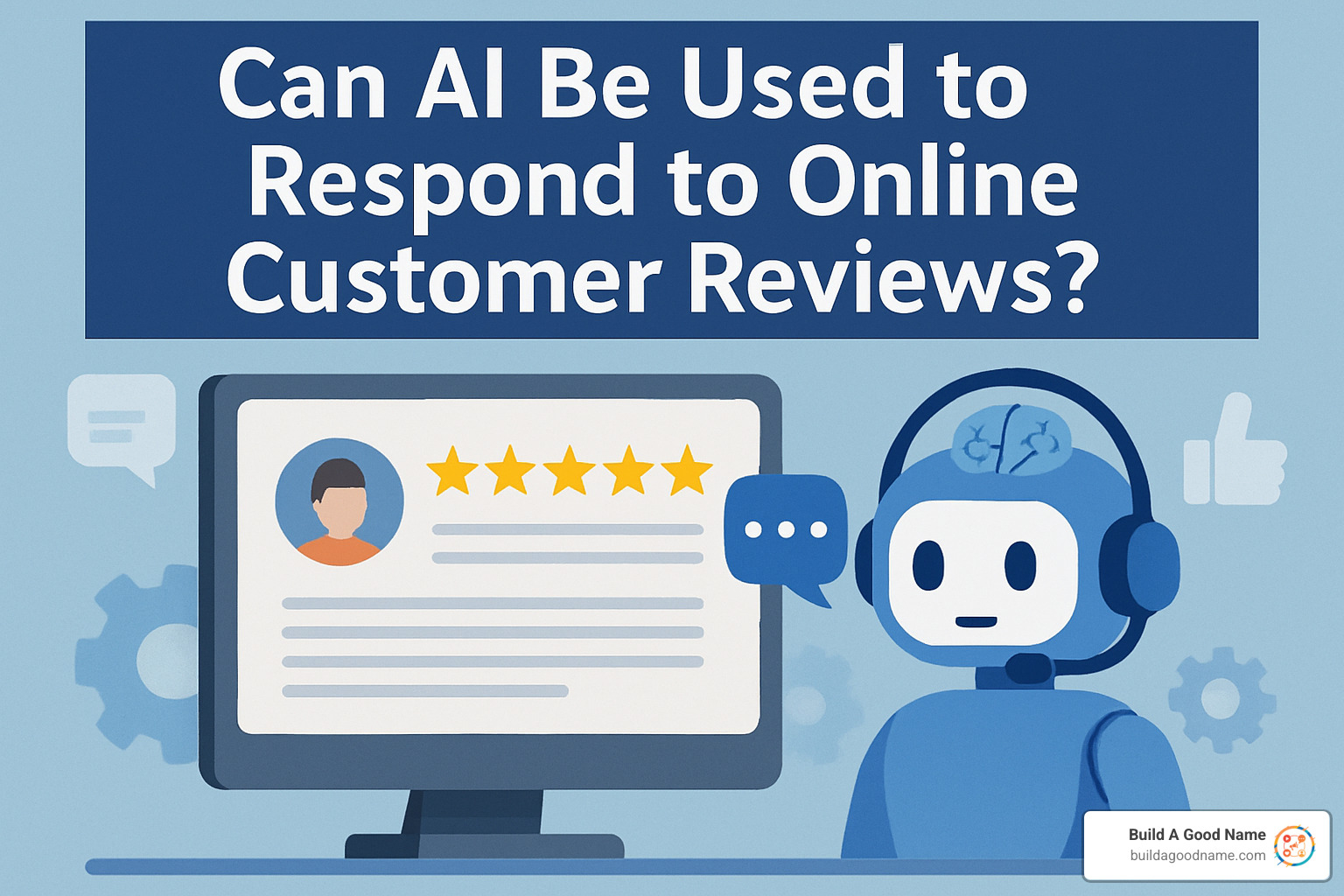
Ready to answer “can AI be used to respond to online customer reviews” with your own success story? Setting up an AI review response system is easier than you might think. We’ve guided hundreds of businesses through this process, and here’s the exact roadmap that works.
Step 1 – Pick the right toolkit
Your toolkit choice sets the foundation for everything that follows. You’ve got two main paths: GPT-style APIs that offer maximum flexibility, or comprehensive SaaS platforms that bundle everything together with user-friendly dashboards.
APIs like ChatGPT give you complete control over customization, but they require technical setup and ongoing maintenance. SaaS platforms, on the other hand, provide ready-to-use interfaces with built-in review management, automated workflows, and customer support.
When evaluating your options, budget matters but shouldn’t be your only consideration. Security and compliance are non-negotiable—especially if you’re in healthcare, finance, or any regulated industry. Scalability is your future-proofing insurance. Choose a platform that grows with you, not one you’ll outgrow in six months.
Our Automated Review Replies feature handles this entire workflow seamlessly, combining AI intelligence with business-friendly automation that actually makes sense.
Step 2 – Connect every channel
Here’s where many businesses make a costly mistake: they focus only on Google reviews and ignore everywhere else customers are talking about them. Your AI system needs to monitor every platform where reviews appear.
Google Business Profile is your top priority—it directly impacts local search rankings and is often the first thing potential customers see. But don’t stop there. Yelp can make or break restaurants and service businesses, while Facebook reviews influence social proof and community perception.
Don’t forget email surveys for capturing private feedback before it becomes public criticism. Web widgets on your website can collect reviews at the moment of peak satisfaction—right after a great experience.
Step 3 – Craft brand-safe prompts (avoid the robot voice)
This step separates businesses that sound authentically helpful from those that sound like they’re run by robots. Generic prompts create generic responses—and customers can tell the difference immediately.
Start by building your tone library. Are you the friendly neighborhood business that uses casual language and exclamation points? Or the professional service provider who maintains formal courtesy? Document your brand voice with specific examples.
Your brand lexicon should include your business name, key services, and industry-specific terms. Character limits keep responses focused and readable. Aim for under 200 words—enough to be thoughtful, not so long that busy customers tune out.
Step 4 – Activate sentiment-based automations
Smart automation means your AI responds appropriately to different emotional contexts. Positive reviews (4-5 stars) often work perfectly with automated responses that express genuine gratitude. Neutral reviews (3 stars) usually signal confusion or mixed experiences. Your AI should ask clarifying questions and offer additional assistance.
Negative reviews (1-2 stars) trigger a different workflow entirely. The AI generates an empathetic holding response while immediately alerting human staff. This ensures upset customers get quick acknowledgment while giving your team time to craft thoughtful solutions.
Step 5 – Add human oversight & approvals
Even the most sophisticated AI needs human wisdom for complex situations. Review queues let your team approve responses before they go public, especially for sensitive reviews or first-time negative feedback.
Red-flag routing automatically escalates serious issues to human staff immediately. Reviews mentioning legal threats, safety concerns, or discrimination need human attention, not automated responses.
Our Respond to Google Reviews feature includes all these oversight tools built-in, ensuring your responses maintain quality while saving precious time for running your business.
Best Practices to Personalize AI Replies (And Still Sound Human)
The secret to natural-sounding AI replies is deliberate personalisation, not complicated code.
- Greet reviewers by name: “Hi Sarah” beats “Dear Customer.”
- Reference the exact thing they mention (“our fish tacos”) so they feel heard.
- Show real gratitude: swap “Thanks for your review” with “We’re thrilled you loved the pancakes!”
- Offer a concrete next step when something goes wrong.
| Generic Bot Reply | Personalised AI-Human Hybrid |
|---|---|
| Thank you for your review. | Hi Jennifer! Thank you for sharing your breakfast experience. We’re so glad you loved the pancakes! |
| We apologise for any inconvenience. | We’re sorry about the 20-minute wait you experienced. That’s not the quick service we aim for. |
| Please contact us to discuss. | Please call us at (555) 123-4567 so we can make this right and ensure your next visit is seamless. |
Prompt-engineering tips
When you ask “can AI be used to respond to online customer reviews without sounding canned?”, good prompts create personality.
Sample prompt:
“Respond as a friendly customer-service manager. Use the customer’s name, keep it under 120 words, mention one specific detail from the review, and end with an invitation to return.”
Set boundaries: apologise and offer a solution for negative reviews; show excitement and suggest a related service for positive ones. Decide in advance whether your brand uses emojis and set a sensible word limit.
Advanced personalisation hacks
- Insert loyalty status or visit count when available (“Thanks for being a member since 2021, Mike!”).
- Mention the location visited if you run multiple sites.
- Tie replies to the season or current promo (“Our spring cleanup specials start next week.”).
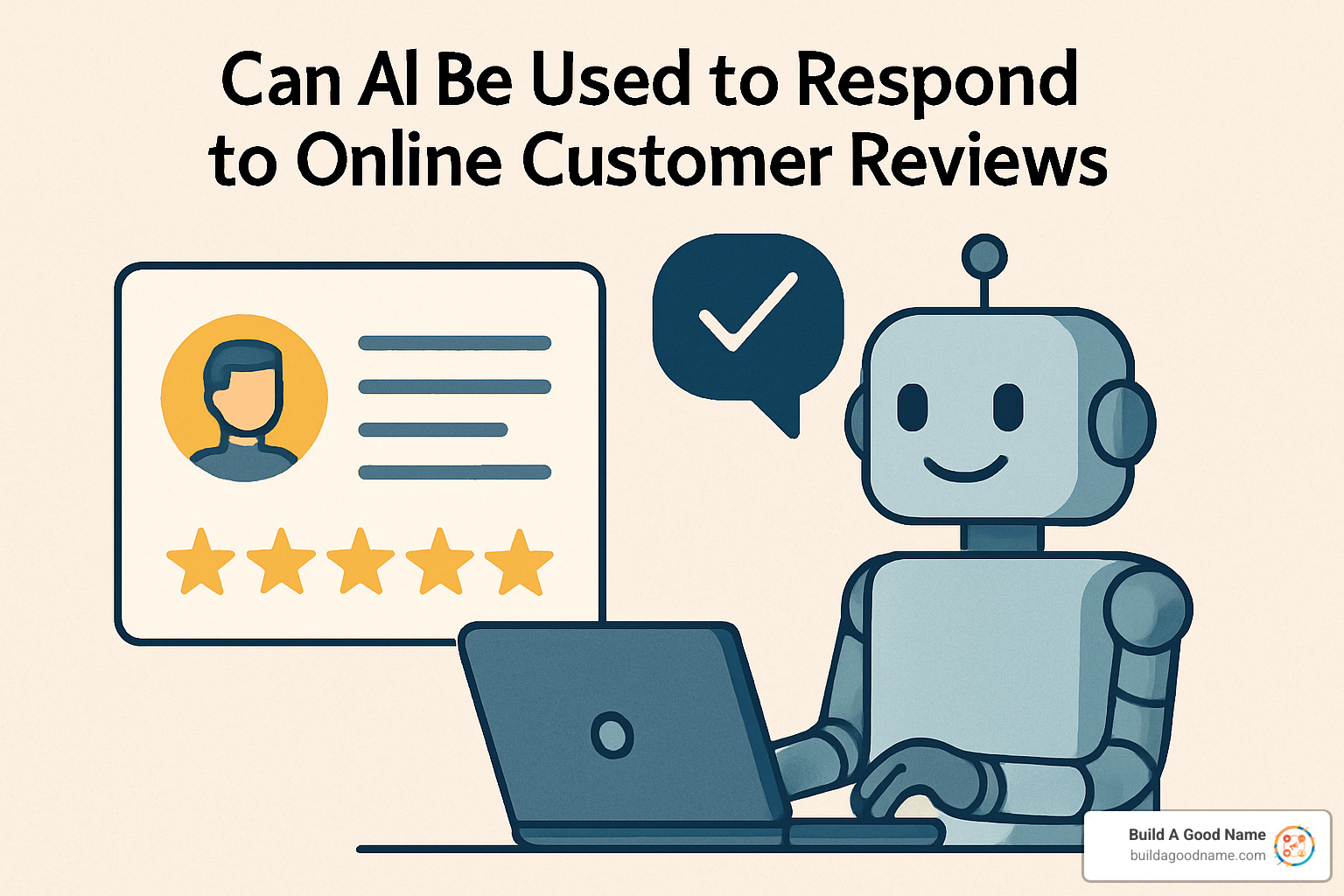
The goal is simple: every customer should feel appreciated, no matter who—or what—typed the words.
Limitations, Risks & Ethical Guardrails You Must Know
Let’s be honest—AI isn’t magic. While it’s incredibly powerful for review responses, it has blind spots that every business owner should understand.
Misinterpretation happens more often than you’d think. AI can stumble over cultural nuances or context clues that humans catch instantly. When a customer writes “This place is sick!” they might mean it’s awesome, but your AI could flag it as negative. Similarly, regional slang or industry-specific terminology sometimes throws AI systems off track.
Sarcasm remains AI’s kryptonite. A review saying “Oh great, another 30-minute wait for cold food” is obviously negative, but AI might latch onto the word “great” and miss the frustration entirely. This is why human oversight matters—especially for reviews with emotional complexity.
The over-automation trap catches many businesses. When every single response sounds perfectly polished and arrives within minutes, customers start noticing. Some situations genuinely need that human touch, that slight imperfection that shows a real person cares about their experience.
Data privacy gets complicated quickly. Customer reviews often contain personal details—names, specific complaints, sometimes even contact information. Your AI system needs to handle this information securely and comply with privacy regulations. Can AI be used to respond to online customer reviews while maintaining privacy? Absolutely, but it requires careful setup.
For regulated industries like healthcare or finance, legal compliance adds another layer of complexity. Every AI response needs to respect industry-specific requirements for customer communications.
Google’s sentiment analysis documentation shows how sophisticated these systems have become, but even Google acknowledges the limitations.
When to pull the human ripcord
Some situations demand immediate human intervention, no questions asked.
PR crises top the list. If a review mentions serious safety issues, potential legal problems, or anything that could attract media attention, get a human involved immediately. AI doesn’t understand the broader implications of certain complaints.
Medical and legal businesses should have humans review every AI response. The stakes are too high for automated replies when professional liability is on the line.
VIP complaints deserve personal attention. When your biggest customer or a local influencer leaves negative feedback, they expect to hear from a real person—preferably someone with decision-making authority.
Transparency & disclosure best practices
Building trust through transparency works better than trying to hide AI involvement.
Consider subtle AI-generated tags like “Response generated with AI assistance” for businesses that want complete transparency. Some customers actually prefer knowing you’re using technology to respond faster and more consistently.
Human signatures create a nice middle ground. Having a real staff member review and “sign off” on AI responses—even if they didn’t write them—adds that personal touch while maintaining efficiency.
Trust signals matter more than perfect responses. Include your phone number, business hours, or links to your website so customers have multiple ways to reach you directly. This shows you’re accessible beyond just review responses.
The goal isn’t to fool anyone—it’s to provide better, faster service while maintaining the human connection that builds lasting customer relationships.
Measuring Success: SEO & Reputation KPIs to Track
Automation only matters if it moves the numbers that matter to your business.
Key metrics:
- Response rate – aim for 90 %+
- Median response time – under 24 hours wins favour with both customers and Google
- Average star rating – should trend upward once people see you care
- Review volume – engaged businesses attract more feedback
- Local keyword rankings – watch your position for “best [service] near me” searches
- Click-through from reviews to your site – a good reply invites the next step
Our Review Management Software tracks these automatically.
Dashboards that make sense
Trend charts reveal whether you’re improving month to month. Topic clusters surface common praise or pain points, and sentiment heat maps show when or where issues spike.
Continuous improvement loop
- Review a sample of AI replies each month.
- A/B test tone, length, or calls-to-action.
- Refine prompts based on what works best.
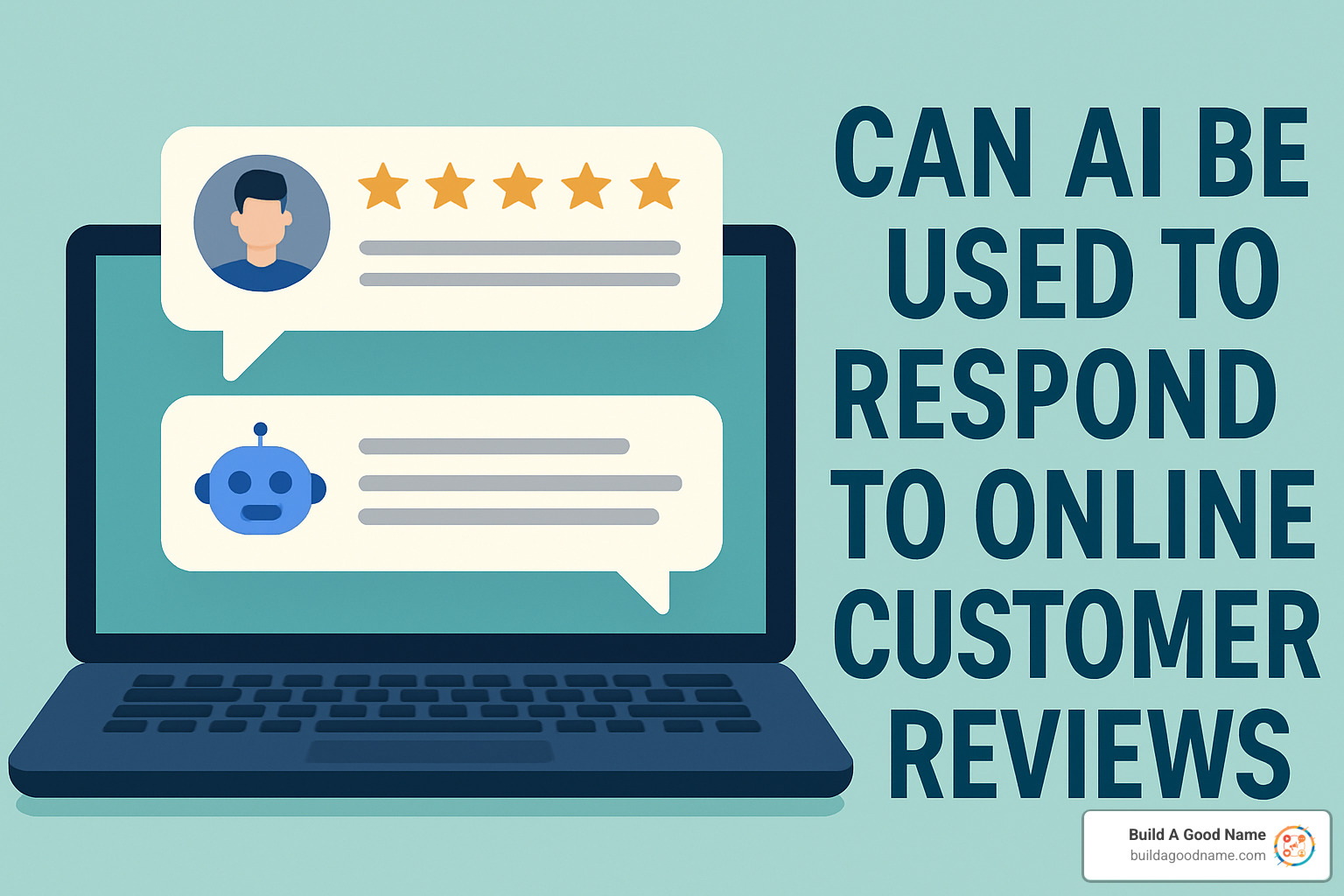
Frequently Asked Questions about AI Review Responses
Are AI-generated replies as effective as human ones?
Yes. In blind studies 58 % of consumers preferred AI replies. Properly trained on your brand voice, AI delivers consistent quality and never misses a review. Most businesses still keep a human in the loop for complex cases.
Do I need to edit every AI draft?
No. Let AI auto-post responses to 4- and 5-star reviews. Have a quick human check for neutral feedback, and personally handle anything involving legal, medical, or VIP issues. Think “review by exception.”
How does this affect local SEO?
Fast, consistent engagement signals to Google that your business is active and customer-focused. Many users see better local rankings within a few months thanks to higher response rates and more incoming reviews.
Conclusion
Can AI be used to respond to online customer reviews? The answer is a resounding yes—and honestly, it’s becoming less of a choice and more of a necessity. The numbers don’t lie: 58% of consumers actually prefer AI-generated responses when they can’t tell the difference, and 88% are more likely to choose businesses that respond to all their reviews.
But here’s what we’ve learned from hundreds of businesses making this transition: success isn’t about replacing humans with robots. It’s about creating the perfect partnership between AI efficiency and human wisdom.
Think of it this way—AI becomes your tireless assistant that never sleeps, never gets overwhelmed by a busy day, and never lets a review go unanswered. Meanwhile, you and your team focus on what humans do best: handling complex situations, making judgment calls, and adding that personal touch that turns customers into loyal fans.
The businesses thriving with AI review management understand this hybrid approach. They let AI handle the routine thank-you messages and straightforward responses, while humans step in for the tricky situations, the upset customers, and the moments that need a genuine personal connection.
What excites us most is where this technology is heading. We’re already seeing incredible advances in multilingual support that can respond to customers in their native language, predictive analytics that spot problems before they become crises, and seamless integration with your existing customer service tools.
The early adopters—the businesses implementing AI review management right now—are seeing real results. Better local search rankings, happier customers, and teams that can focus on growing the business instead of scrambling to respond to reviews at the end of each exhausting day.
The question really isn’t whether you should use AI for review responses anymore. It’s how quickly you can get started and do it right. With proper setup, thoughtful prompts that capture your brand’s personality, and smart human oversight, AI transforms review management from that dreaded end-of-day task into a powerful growth engine.
If you’re ready to make this leap, our Review Management for Local Businesses platform brings everything together in one place: intelligent AI responses, connections to all the review platforms that matter, human oversight tools that keep you in control, and analytics that show you exactly how it’s helping your business grow.
The future of customer engagement isn’t about choosing between technology and human connection—it’s about using both together to create something better than either could achieve alone.

